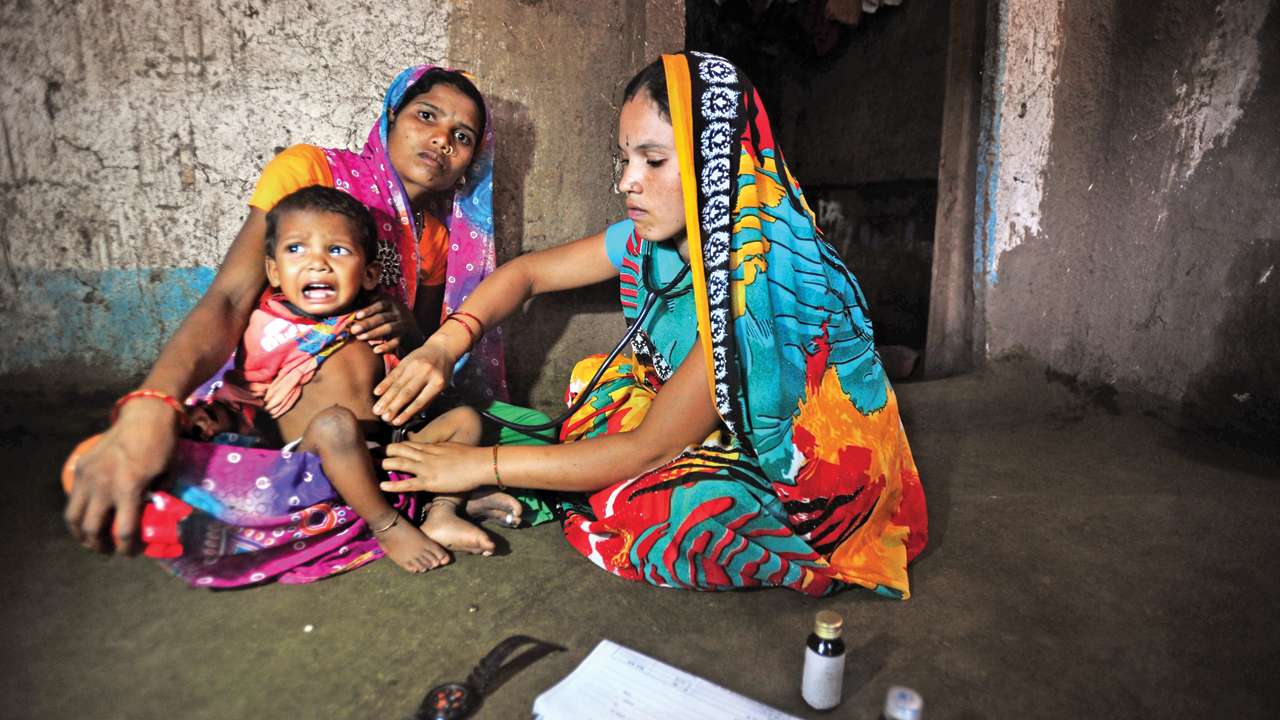
The recently announced government’s flagship healthcare programme Ayushman Bharat rests on two pillars – primary healthcare and financial protection. While a National Health Protection Scheme (NHPS) was announced to provide financial protection to poor families during illnesses, the other component is setting up 1.5 lakh Health and Wellness Centres (HWCs).
Hours after the Budget announcement, NHPS had caught the imagination of people, both in India and abroad. The World Health Organization’s Director General, Dr Tedros Adhanom Ghebreyesus, was prompt enough to tweet his support for NHPS.
Interestingly, the health and wellness centres are yet to capture adequate media attention, even though they are set to be a major contributor to the success of NPHS by way of acting as a gatekeeper to it.
Unlike the existing health sub-centres, which aimed at delivery of selective care at a community level, the new health and wellness centres would focus on a comprehensive primary health care. Undoubtedly, these centres will be the backbone of Ayushman-Bharat and will be pivotal in reducing catastrophic health expenditure.
In India, delivery of healthcare through public institutions has followed a three-tier model. Sub-centres for a population of 5,000 at the bottom, Primary Health Centres catering to 30,000 population in the middle, and Community Health Centres at the top for 1.2 lakh people.
Sub-Centre, the most peripheral and first contact point, is manned by one Auxiliary Nurse Midwife (ANM) and one male health worker and five link workers called ASHA.
Health and Wellness Centres are envisioned to be the highly improved avatar of sub-centres to provide a larger package of comprehensive primary healthcare. Besides a package of 12 essential health services, they will integrate AYUSH, Yoga, and lifestyle changes and screen people for non-communicable diseases, aside from basic diagnostics and drug dispensing. By acting as gatekeepers for secondary and tertiary care through NHPS, they will ensure the continuum of care.
With an eight-member health and wellness team, each centre will have to serve a population of 5,000. The team will comprise a mid-level provider, who will be either be a nurse practitioner or an Ayurveda practitioner, two Multi-Purpose workers and 5 ASHAs.
As per the roadmap presented by the government’s premier think tank Niti Aayog in post Budget announcements, all the 1.5 lakh centres will be functional by December 2022.
The concept of these new health and wellness centres to provide comprehensive primary health care is laudable.
However, there are stiff challenges to overcome, biggest of them being availability of infrastructure and human resources. The sub-centres, which will be transformed into health and wellness centres, fall short in both these.
As per Rural Health Statistics, 2016-17, out of 1,56,231 sub-centres in the country, only 21,551 are functioning as per the Indian Public Health Standards, notified as benchmarks for public health facilities by the Government of India. Moreover, 31 per cent do not have a building of their own while 28.5 per cent and 25.6 per cent are without regular water and electricity supply, respectively. Majority of the sub-centres run out of a couple of rooms, as compared to the minimum requirement of seven rooms in a health and wellness centre.
A bigger challenge would be arranging trained and qualified manpower at these centres. Already, there is a vacancy of one lakh male health workers and 26,172 Auxiliary Nurse Midwife at the sub-centres, and 4,243 of them were without a single health worker as on March 31, 2017.
The leadership of these centres will devolve on the mid-level care provider, to be called the Community Health Officer(CHOs). This new breed of health practitioners is to be recruited from the pool of staff nurses and Ayurveda graduates. However, staff nurses are already difficult to find, with the existing Primary Health Centres grappling with the shortage of 11,288 nurses against 77,956 sanctioned positions.
CHOs will be imparted the necessary knowledge and skill-sets through a six-month bridge course. The Ministry of Health and Family Welfare has collaborated with IGNOU for development of the bridge course. However, the process of identifying teaching institutions, designing special curriculum, and getting the necessary teaching staff would be a herculean task.
Another pertinent question is whether these centres will be able to deliver the rich bouquet of health-care services with just one additional mid-level practitioner to the contingent of staff presently prescribed for the sub-centres.
An enabling legal framework may also be needed to guard against legal challenges which may jeopardise the plan. Attempts in the recent past to create such mid-level care providers have seen vehement opposition. This includes attempts to start the Bachelor of Rural Medicine and Surgery (BRMS), Bachelor of Rural Health Care (BRHC), and the Bachelor of Science in Community Health (BScCH). Even the Parliamentary Standing Committee on Health and Family Welfare recommended against starting the BScCH course. Once operational, attrition of the CHOs could be a big problem at the centres. Once trained and experienced, they may be preyed upon by the private sector. However, no challenge is insurmountable. With the government’s firm commitment and weight behind Ayushman Bharat, and liberal financial allocations, healthcare in the country is set to see a massive transformation. And these centres are soon going to be the face of the New India.
The author is an IAS officer currently pursuing a doctorate in public health from the London School of Hygiene and Tropical Medicine. Views expressed are personal.